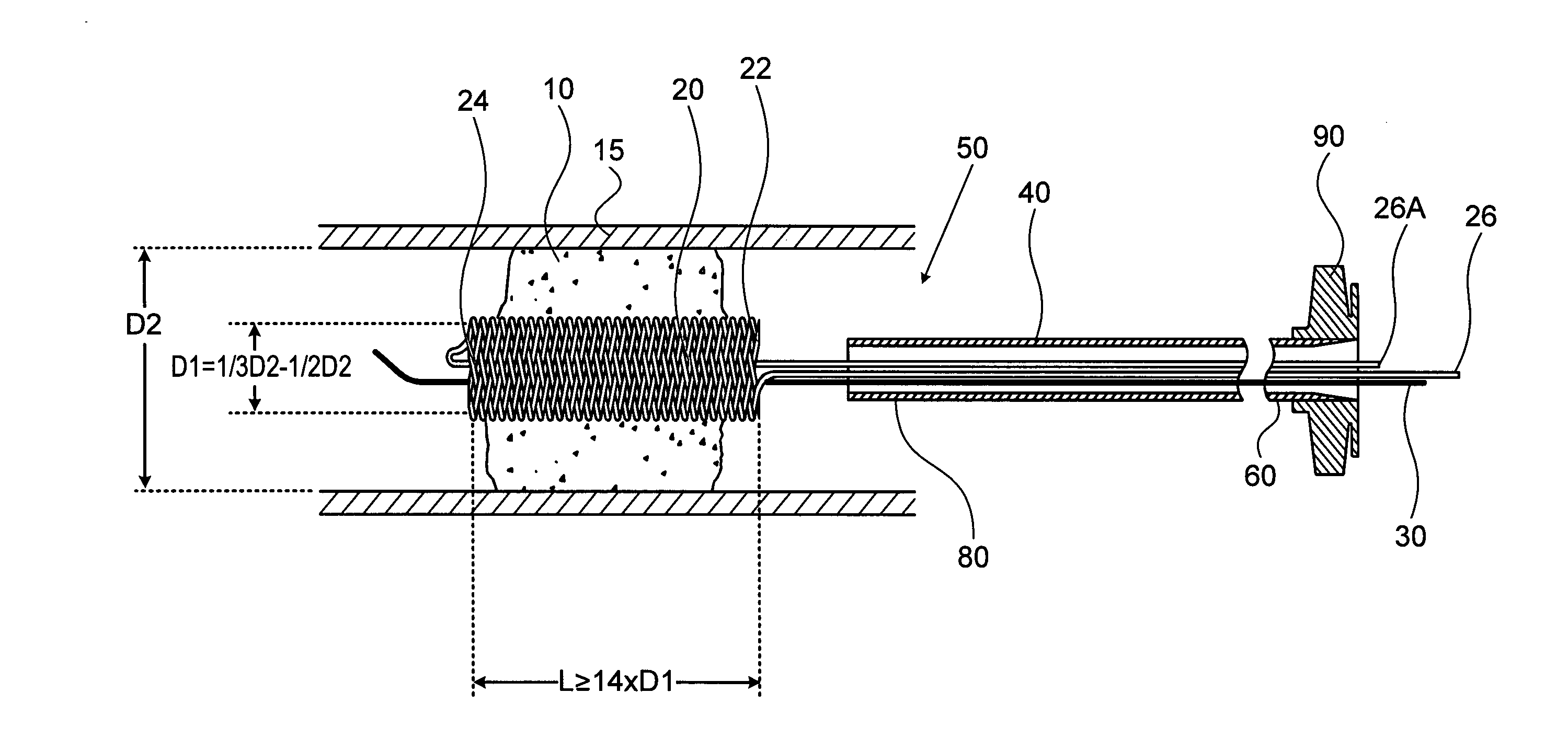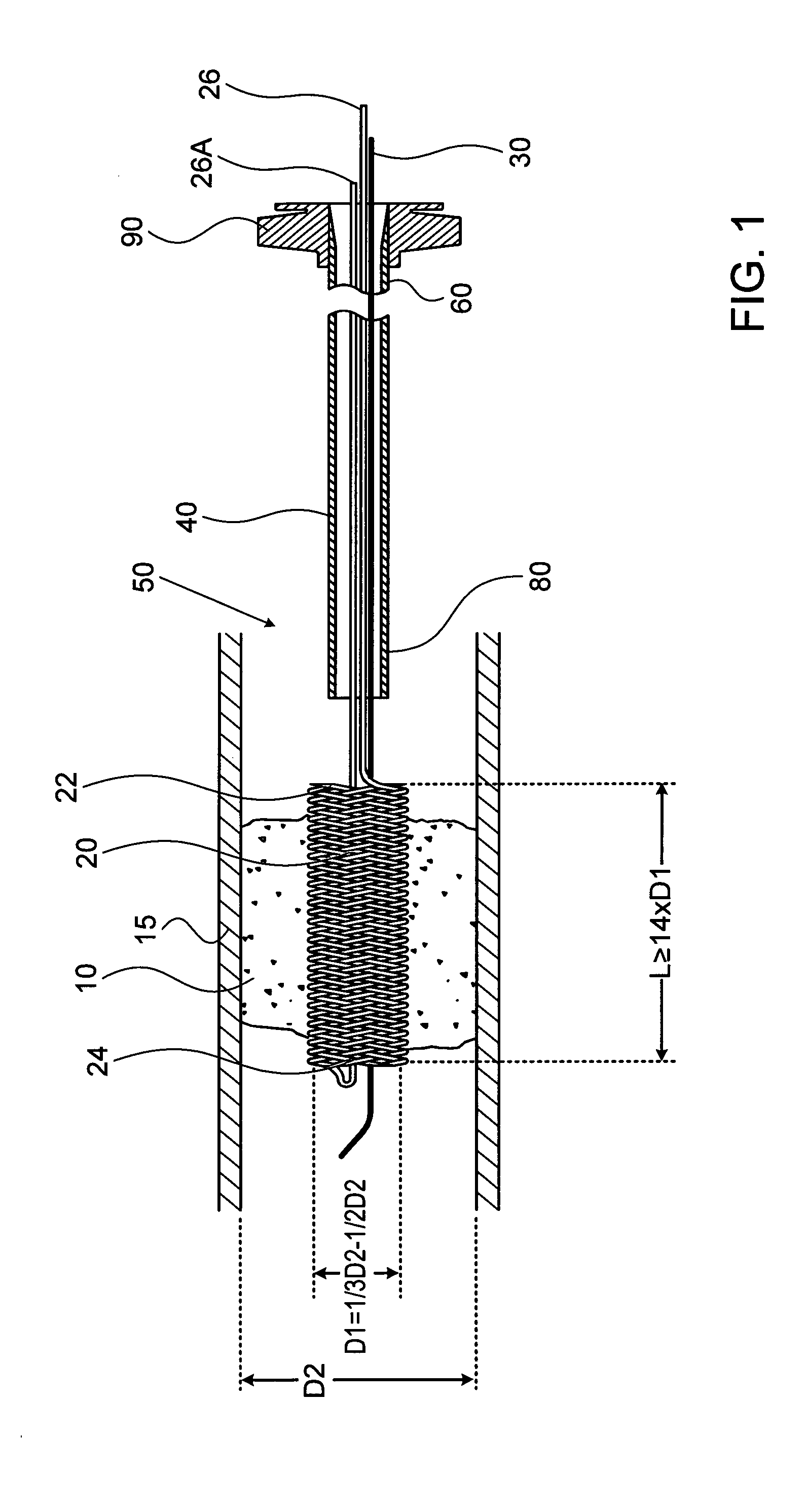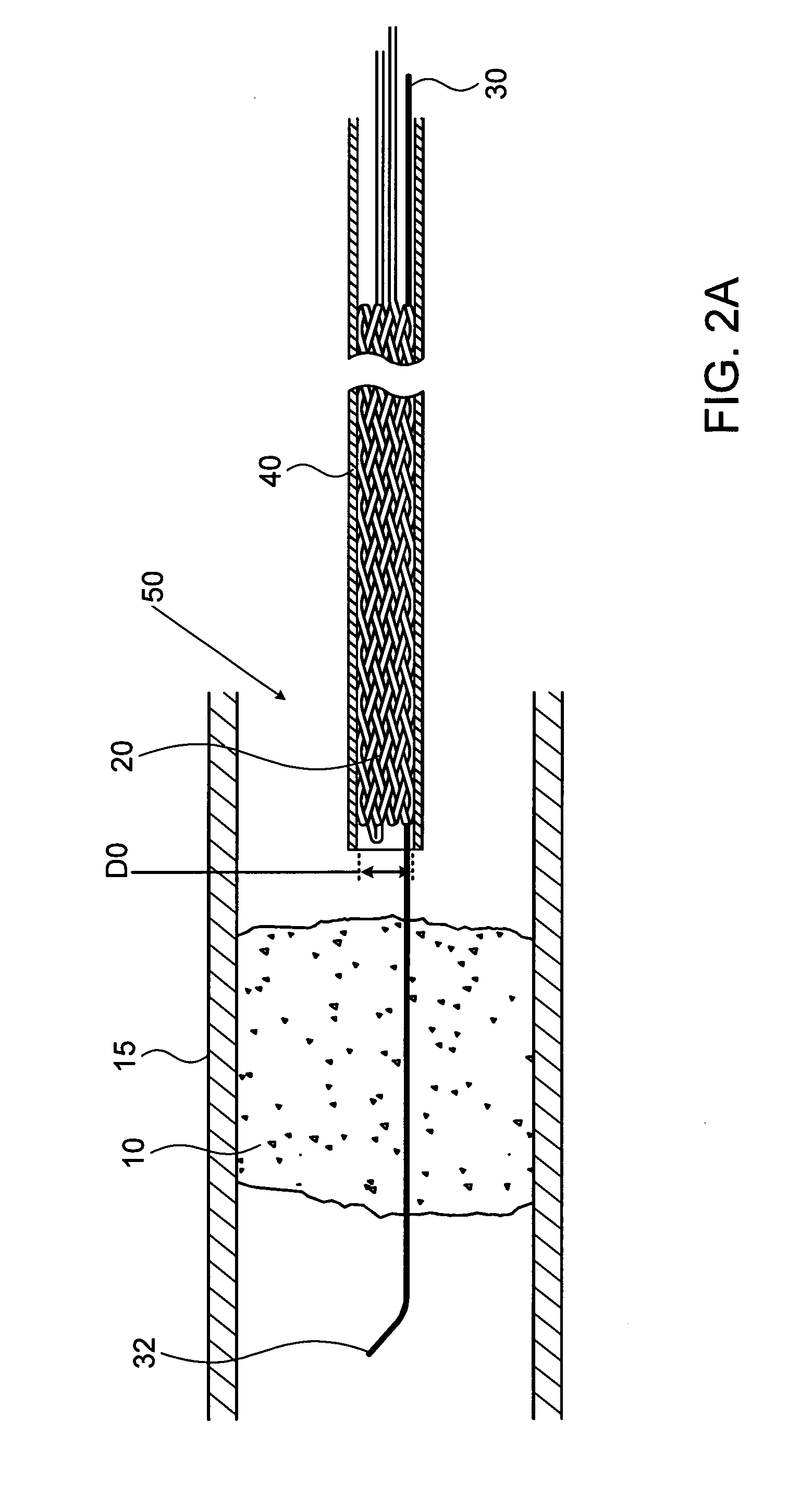Method and apparatus for allowing blood flow through an occluded vessel
a technology of occluded vessels and blood flow, applied in the field of medical devices, can solve the problems of tissue ischemia (lack of oxygen and nutrients), rapid development of tissue ischemia, and rapid progression of tissue infarction (cell death) to achieve the effect of preventing undeired radial force against the occlusion
- Summary
- Abstract
- Description
- Claims
- Application Information
AI Technical Summary
Benefits of technology
Problems solved by technology
Method used
Image
Examples
first embodiment
[0051]FIG. 1 illustrates a high level schematic diagram of a sectioned view of a temporary endovascular conduit system, denoted temporary endovascular conduit system 50, deployed in an occlusion 10 occluding a body lumen 15. Temporary endovascular conduit system 50 comprises: a catheter 40, exhibiting a proximal portion 60 and a distal portion 80; a hub 90; a pair of members 26 and 26A; a guide wire 30; and a self expanding device 20, exhibiting a proximal end 22 and a distal end 24, illustrated in a large diameter state. The diameter of body lumen 15 in the area of occlusion 10 is denoted D2, and the inner diameter of self expanding device 20 in the large diameter state, denoted D1, is preferably between ⅓ and ½ of D2. Body lumen 15 is a small blood vessel, exhibiting an inner diameter D2 of 5 mm or less, as described above. Advantageously, providing a conduit exhibiting an inner diameter for blood flow of at least ⅓ of D2 allows a sufficient blood flow, in the absence of sufficien...
second embodiment
[0071]FIG. 4 illustrates a high level schematic diagram of a sectioned view of a temporary endovascular perfusion conduit system, denoted temporary endovascular perfusion conduit system 150, deployed in an occlusion 10 occluding a body lumen 15. Temporary endovascular perfusion conduit system 150 comprises: a catheter 40, exhibiting a proximal portion 60 and a distal portion 80; a hub 90; a pair of members 126 and 126A; and an expanding device 120, exhibiting a proximal end 122 and a distal end 124, illustrated in a large diameter state. A guide wire 30 is also provided. The diameter of body lumen 15 in the area of occlusion 10 is denoted D2, and the inner diameter of expanding device 120 in the large diameter state denoted D1, is between ⅓ and ½ of D2. Advantageously providing a conduit exhibiting an inner diameter for blood flow of at least ⅓ of D2 allows a sufficient blood flow, in the absence of sufficient collateral flow from other arteries, to prevent or delay cell death since...
PUM
 Login to View More
Login to View More Abstract
Description
Claims
Application Information
 Login to View More
Login to View More - R&D
- Intellectual Property
- Life Sciences
- Materials
- Tech Scout
- Unparalleled Data Quality
- Higher Quality Content
- 60% Fewer Hallucinations
Browse by: Latest US Patents, China's latest patents, Technical Efficacy Thesaurus, Application Domain, Technology Topic, Popular Technical Reports.
© 2025 PatSnap. All rights reserved.Legal|Privacy policy|Modern Slavery Act Transparency Statement|Sitemap|About US| Contact US: help@patsnap.com



